Wake Island is a remote atoll in the Central Pacific Ocean and is home to a variety of fascinating bird species.
The island is a crucial migratory stopover for many species of shorebirds, waterfowl, and seabirds, providing a rest stop and an essential food source on the long journey between the Arctic and Australasia.
Wake Island also supports a rich and diverse population of resident bird species, including many species of terns, herons, and seabirds.
This incredible variety of birdlife makes Wake Island an important birding destination, offering birders the opportunity to observe a wide range of species in an untouched, unspoiled environment.
1. Sanderling
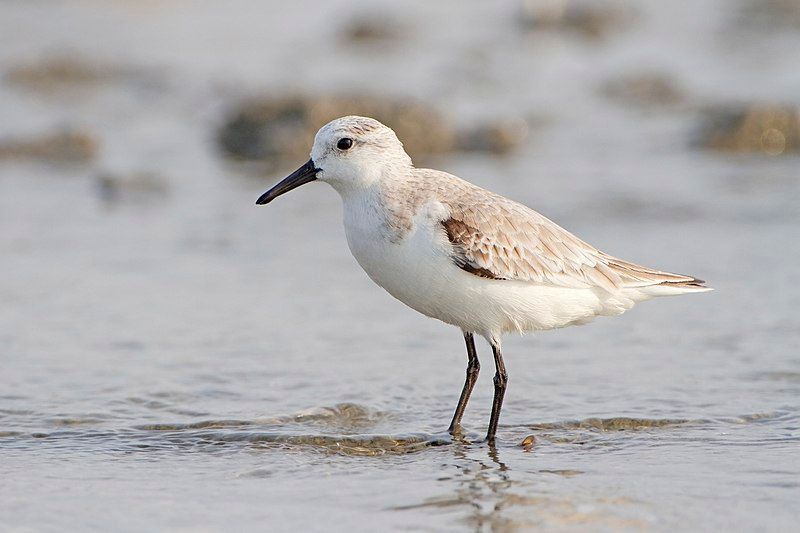
The sanderling is a small wading bird found in many parts of the world. The name of this bird is derived from Old English, where ‘sand-yrðling’ translates to ‘sand-ploughman’, referring to the bird’s habit of running along the beach as if ploughing through the sand.
The genus name of the sanderling, ‘kalidris’ or ‘skalidris’, is taken from Ancient Greek and was used by Aristotle to refer to some grey-colored waterside birds. The specific name for the sanderling, ‘alba’, is Latin for ‘white’.
This reflects the white coloration of the bird’s feathers.
| Kingdom | Animalia |
| Phylum | Chordata |
| Class | Aves |
| Order | Charadriiformes |
| Family | Scolopacidae |
| Genus | Calidris |
| Species | C. alba |
2. Brown Pelican
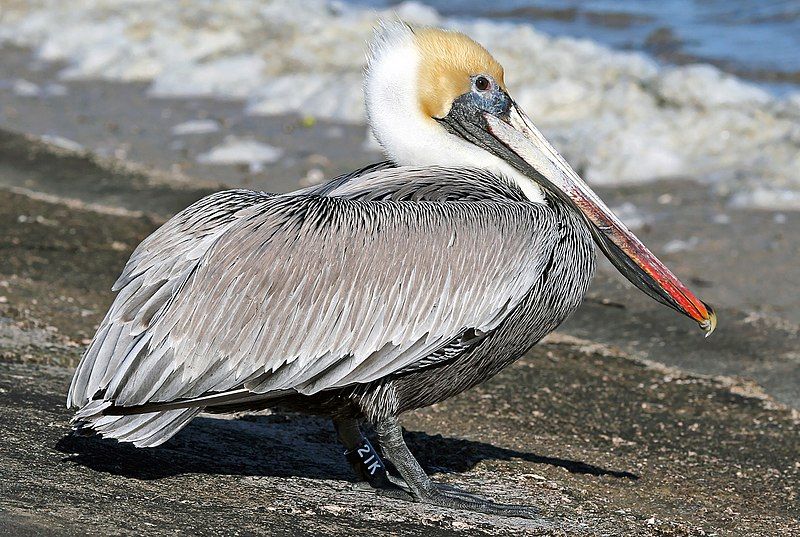
The brown pelican is a large bird belonging to the Pelecanidae family, which is comprised of pelicans found in the Americas. It is one of three species of pelicans living in the Americas and one of two that feed by diving into the water.
As a species, the brown pelican is unique in its feeding technique. It dives from the air, plunging into the water with its beak open and scooping up fish in its pouch-like bill. The pelican then tilts its head back and swallows the fish.
This technique allows it to feed on medium-sized fish that are found in shallow waters. The brown pelican is a common sight along the coastlines of the United States and Mexico. Its wingspan can reach up to 8 feet, making it an impressive sight when flying.
Its brown feathers provide camouflage when it is in the water, helping it blend in with its environment. The brown pelican is an important species in the marine ecology of the Americas and is a symbol of coastal wildlife and conservation.
| Kingdom | Animalia |
| Phylum | Chordata |
| Class | Aves |
| Order | Pelecaniformes |
| Family | Pelecanidae |
| Genus | Pelecanus |
| Species | P. occidentalis |
3. Sandpiper
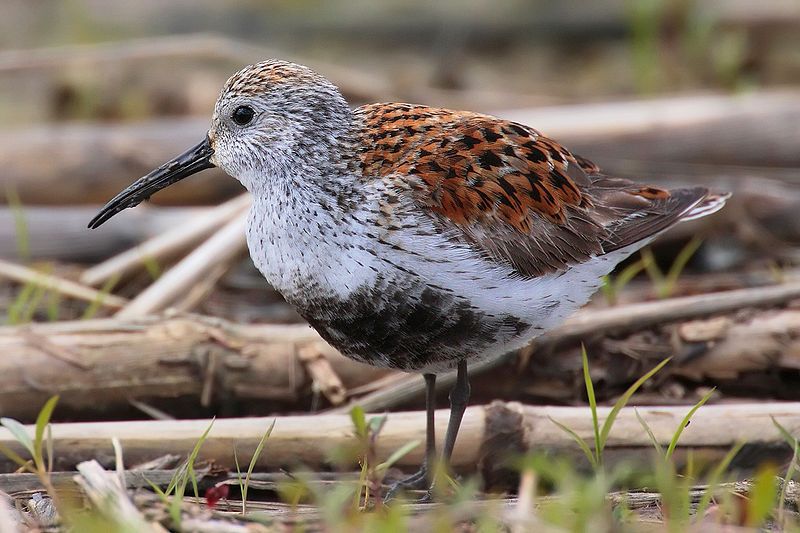
Sandpipers are a large family of wading birds, known as Scolopacidae. They are found all over the world in a variety of habitats, from coasts and estuaries to wet meadows and marshes.
Sandpipers are characteristically small to medium-sized birds, with long legs and delicate bills.
They range in size from the tiny least sandpiper to the giant Far Eastern curlew. Within the Scolopacidae family, there are several different species of sandpipers, as well as other birds such as curlews and snipes.
These birds can be distinguished by their typically long legs and bills. Sandpipers are usually monogamous, and they tend to form small flocks when foraging. The majority of sandpiper species feed on small invertebrates, such as insects, worms, and crustaceans.
They typically probe the mud or soil with their long bills, searching for food. This behavior is known as “mud-piping”, and it is a characteristic of many sandpipers. Some species also feed on seeds and berries.
| Kingdom | Animalia |
| Phylum | Chordata |
| Class | Aves |
| Order | Charadriiformes |
| Family | Scolopacidae |
4. Dunlin
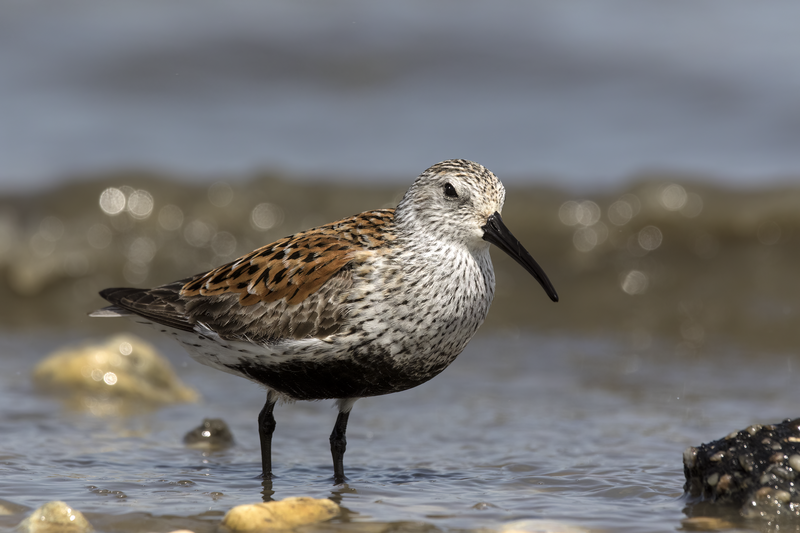
The dunlin is a small, migratory wader bird. It belongs to the family Scolopacidae, which includes a variety of wading birds, such as sandpipers and snipes. This bird was formerly classified in the genus Erolia, along with other species of ‘stints’.
The English name of the dunlin is derived from a dialect form of ‘dunling’, which was first recorded in 1531-1532. The term ‘dun’ refers to the dull brown color of the bird’s plumage, while the suffix ‘ling’ refers to a person or thing that has a particular quality.
The dunlin is a popular bird among birdwatchers due to its strikingly patterned plumage and its tendency to migrate in large flocks. It breeds in the Arctic and winters in more temperate climates.
It is a small bird with a length of approximately 12-15 cm and a wingspan of around 25-30cm. Its diet consists primarily of insects, molluscs, crustaceans, and other invertebrates.
| Kingdom | Animalia |
| Phylum | Chordata |
| Class | Aves |
| Order | Charadriiformes |
| Family | Scolopacidae |
| Genus | Calidris |
| Species | C. alpina |
5. Northern Pintail
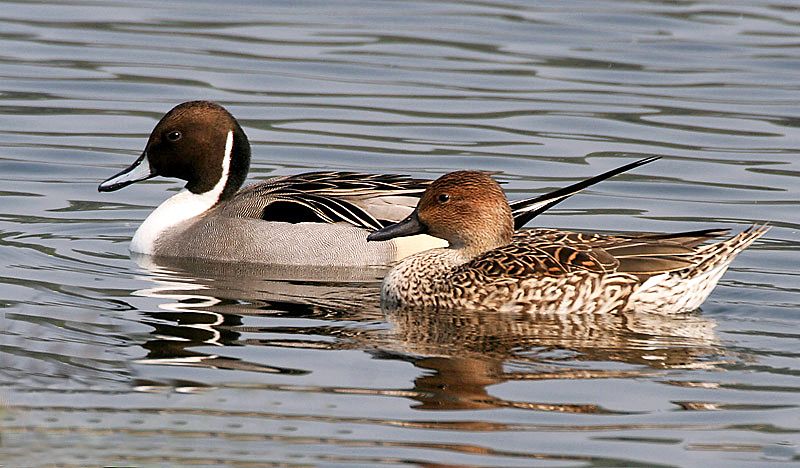
The pintail or northern pintail is a species of duck that is found across a wide geographic range. It breeds in the northern regions of Europe, as well as the Palearctic and North America.
This species of duck is migratory, meaning that it will travel from its northern breeding grounds to warmer climates for the winter. It can be found in areas as far south as the equator, allowing it to take advantage of better food sources and more hospitable climates.
The pintail is an adaptable species that is capable of thriving in a variety of habitats, from shallow wetlands to grasslands. Its wide range and ability to migrate make it a resilient species that is unlikely to be threatened by environmental changes.
| Kingdom | Animalia |
| Phylum | Chordata |
| Class | Aves |
| Order | Anseriformes |
| Family | Anatidae |
| Genus | Anas |
| Species | A. acuta |
6. Spotted Sandpiper
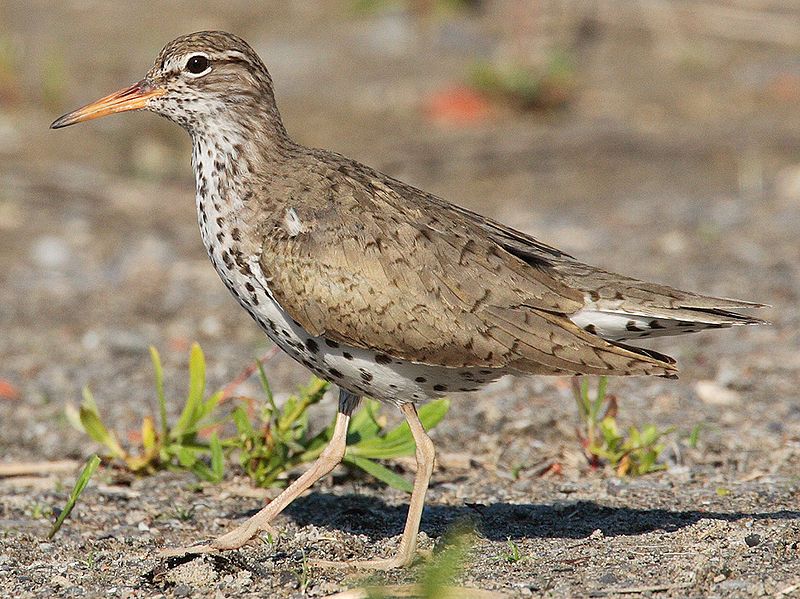
The spotted sandpiper is a small shorebird that is a member of the genus Actitis, which also includes the common sandpiper. This genus of birds is known to inhabit different areas of the world, and rarely do the two species of sandpipers inhabit the same region.
However, there have been cases of individual birds from either species settling down in the other species’ area and reproducing, creating hybrids of the two species.
This hybridization process is known as introgression, and it further blurs the boundaries between the two species of sandpipers.
| Kingdom | Animalia |
| Phylum | Chordata |
| Class | Aves |
| Order | Charadriiformes |
| Family | Scolopacidae |
| Genus | Actitis |
| Species | A. macularius |
7. Wandering Tattler
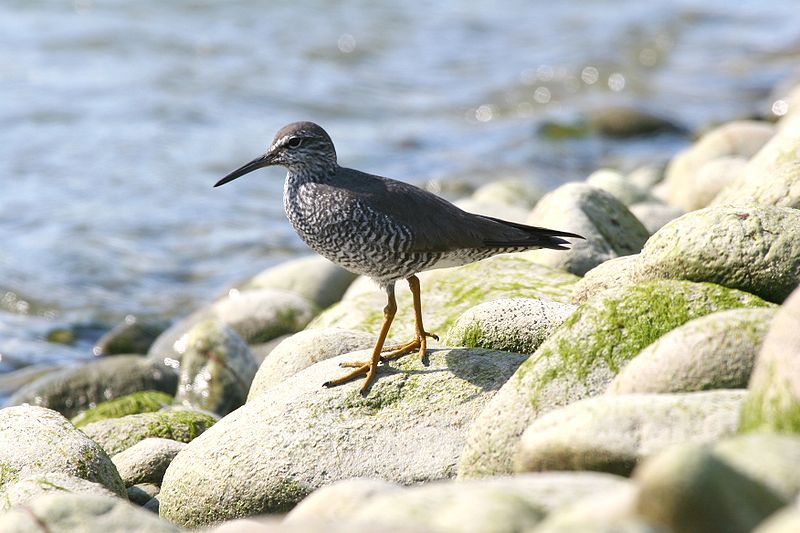
The Wandering Tattler, or Tringa incana, is a medium-sized, shorebird. It is closely related to the Gray-tailed Tattler, Tringa brevipes, and is similar in appearance. The Wandering Tattler is gray-brown overall, with darker wings, and a white rump.
Its long bill is yellowish-green, and its legs are yellow. The species is migratory and can be found in coastal wetlands and beaches during the summer months. They feed mainly on insects, crustaceans, and other invertebrates.
During migration, they have been known to form large flocks, often mixing with other wading birds. They have a unique call, which is a series of “tut-tut” sounds that can be heard from a distance.
The Wandering Tattler is a useful bird to watch out for when birding and can be a great addition to any bird-watcher list.
| Kingdom | Animalia |
| Phylum | Chordata |
| Class | Aves |
| Order | Charadriiformes |
| Family | Scolopacidae |
| Genus | Tringa |
| Species | T. incana |
8. Pectoral Sandpiper
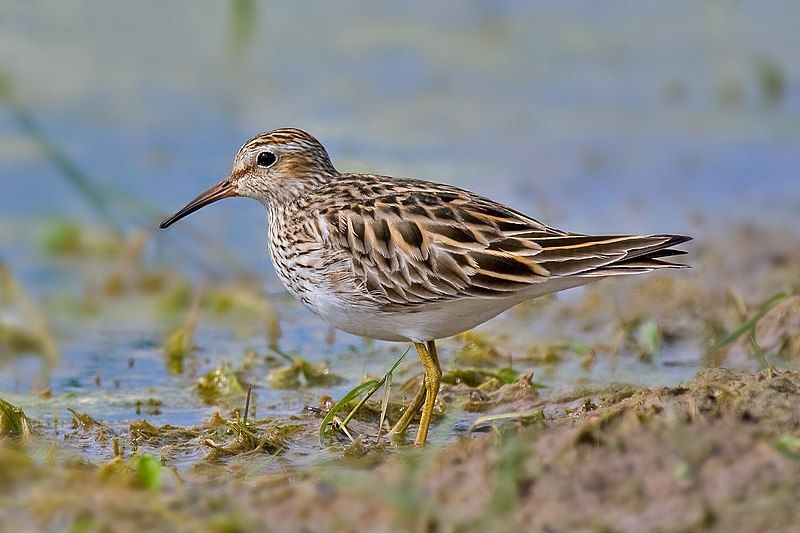
The pectoral sandpiper is a small migratory bird that can be found in North America and Asia during the breeding season. It spends the winter season in South America and Oceania. Its diet consists mainly of small invertebrates, such as insects, worms, and mollusks.
When breeding, the pectoral sandpiper makes its nest by scratching into the ground and lining it with thick material. The purpose of the nest is to protect the four eggs that the pectoral sandpiper lays from the cold wind, which is a common occurrence in its breeding grounds.
The nest is deep enough to provide the necessary insulation to keep the eggs safe. The migration of the pectoral sandpiper is quite remarkable, as it covers vast distances.
It travels from its breeding grounds in North America and Asia to its wintering grounds in South America and Oceania, which involves crossing several oceans and continents. This demonstrates the resilience of the species and its ability to adapt to different environments.
The pectoral sandpiper is an important species in the natural environment. Its habitat provides a vital source of food for other species, while its nesting behavior helps to ensure the survival of its species.
Its ability to migrate long distances also contributes to its significance in the global ecosystem, as it helps to distribute certain resources, such as nutrients, to different parts of the world.
| Kingdom | Animalia |
| Phylum | Chordata |
| Class | Aves |
| Order | Charadriiformes |
| Family | Scolopacidae |
| Genus | Calidris |
| Species | C. melanotos |
9. Sharp-tailed Sandpiper
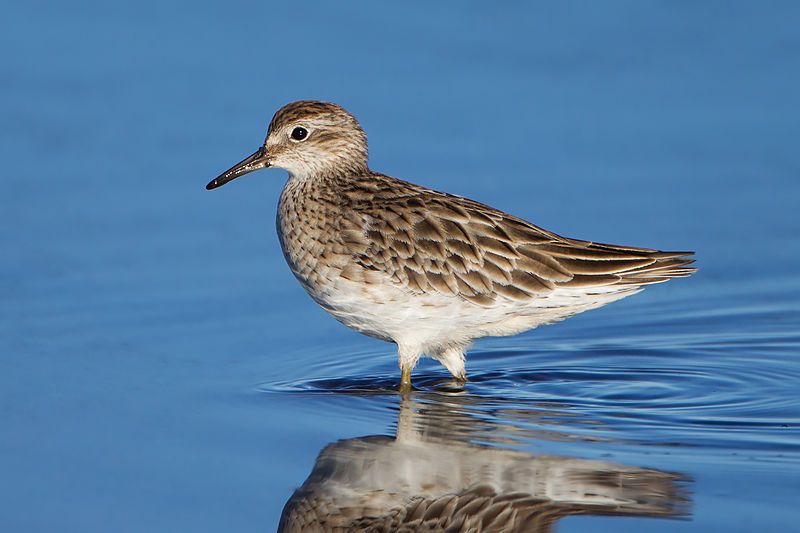
The sharp-tailed sandpiper is a migratory bird that can be found in various parts of the world. It is a relatively small to medium-sized wader or shorebird, with a body length of about 16 cm and a wingspan of around 30 cm.
This species is most commonly found in Siberia during the summer months, where it breeds and then migrates south to Australia for the winter.
Along its migratory route, it is known to stop in other areas, such as the Pacific coast of North America and Asia. The sharp-tailed sandpiper is a highly adaptable species, feeding on a wide variety of food sources, including insects, crustaceans, worms, and mollusks.
It also takes advantage of human-altered habitats, such as farm fields and urban parks.
Its diet is complemented by its ability to wade in shallow water and run along the shoreline in search of food. The sharp-tailed sandpiper is an important species in the ecosystem, as it helps to keep insect and other invertebrate populations in check.
It is also an important indicator of wetland health, as it is one of the first species to decline in areas with degraded water quality.
The sharp-tailed sandpiper and other wading birds are also significant contributors to the tourism industry, as they are often seen by birdwatchers and other nature lovers.
| Kingdom | Animalia |
| Phylum | Chordata |
| Class | Aves |
| Order | Charadriiformes |
| Family | Scolopacidae |
| Genus | Calidris |
| Species | C. acuminata |
10. Brown Noddy
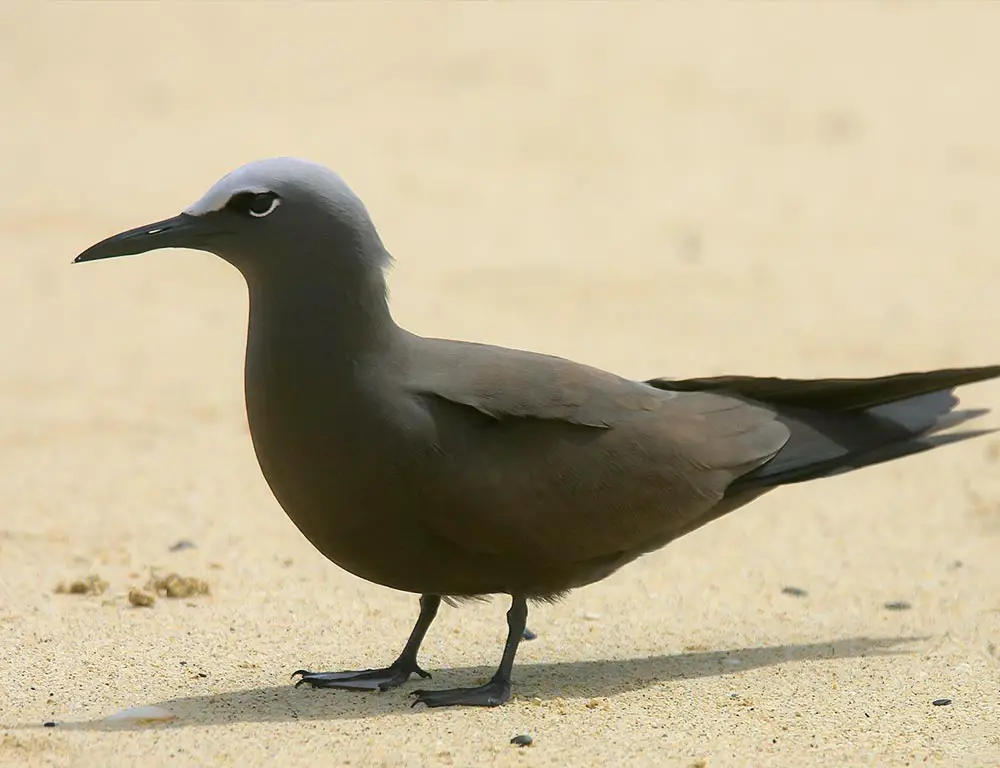
The brown noddy, also known as the common noddy, is a type of seabird found in the family Laridae. It is the largest of the noddies, usually being larger in size than the closely related black noddy.
The brown noddy is easily identifiable by its distinct plumage which is dark brown instead of black like its counterpart.
The differences in size and coloring help differentiate between the two species. The brown noddy is a species of seabird that is found in tropical and subtropical regions of the world. It is found in coastal waters, nesting on small islands and feeding on fish and invertebrates.
The brown noddy is a gregarious sea bird, often forming large flocks in the air and on the sea. They are known to be highly active, performing a variety of aerial acrobatics. The brown noddy is an important species for the conservation of marine ecosystems.
Its diet helps to keep marine ecosystems balanced by controlling the populations of fish, invertebrates, and other organisms.
The brown noddy also plays a role in the local economy, as their guano is harvested as a natural fertilizer for agricultural purposes. Overall, the brown noddy is an important species of seabird and plays a vital role in maintaining the balance of marine ecosystems.
Its distinct size and plumage make it easy to differentiate from other seabirds, and its importance to the environment makes it a species worth protecting.
| Kingdom | Animalia |
| Phylum | Chordata |
| Class | Aves |
| Order | Charadriiformes |
| Family | Laridae |
| Genus | Anous |
| Species | A. stolidus |
11. Wedge-tailed Shearwater
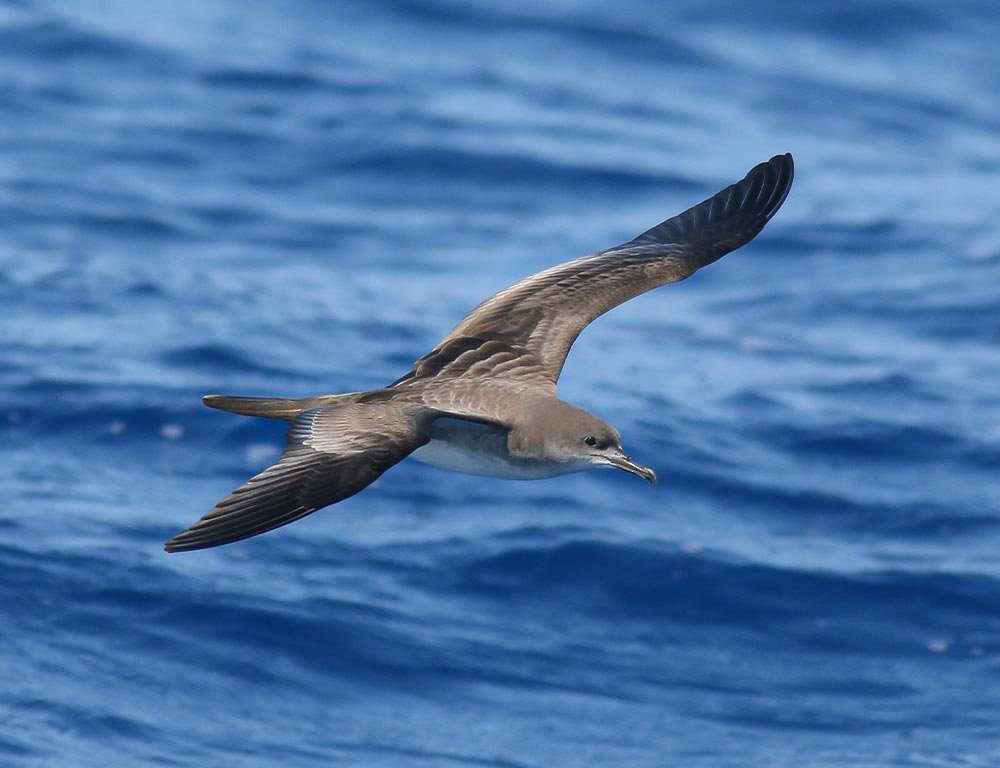
The wedge-tailed shearwater is a seabird belonging to the Procellariidae family, which is one of the larger species of shearwaters.
This species is commonly referred to as a ‘muttonbird’ alongside the sooty shearwater from New Zealand and the short-tailed shearwater from Australia.
It is a medium-large bird that is found mainly in the waters of Australia and New Zealand, although it may also be spotted in other parts of the Pacific Ocean. The wedge-tailed shearwater has a long slender body with a wedge-shaped tail, giving it the name.
Its plumage is mainly dark grey above and white below, with a pale grey head and neck. Its feet are greyish-black and its bill is dark grey. The wedge-tailed shearwater usually breeds in colonies on islands off the coast of Australia and New Zealand.
It feeds mainly on small fish, squid, and crustaceans. The wedge-tailed shearwater is an important part of marine ecology, as it is a part of the food chain and helps to keep the ocean waters healthy.
It is also an important species for traditional fishing populations of Australia and New Zealand, as the birds are harvested for their meat and feathers. The wedge-tailed shearwater is an iconic species, and it is often seen gliding gracefully over the ocean waves.
| Kingdom | Animalia |
| Phylum | Chordata |
| Class | Aves |
| Order | Procellariiformes |
| Family | Procellariidae |
| Genus | Ardenna |
| Species | A. pacifica |
12. Black Bellied Plover
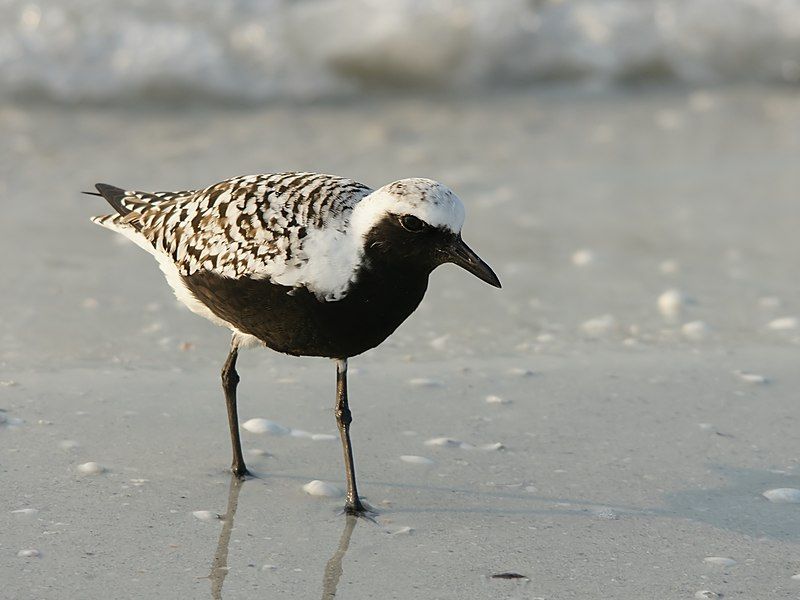
The grey plover is a species of shorebird native to various parts of the world and is known as the black-bellied plover in North America. This bird is relatively large and is found in habitats such as tundra, coasts, and mudflats.
It typically breeds in Arctic regions, but is also a long-distance migrant, meaning that it will travel vast distances for migration. As a result, it has a nearly worldwide coastal distribution when it is not breeding.
During the breeding season, it will be found in its Arctic habitat, but in the winter it can be found in places such as Africa, Europe, and North America.
It has a varied diet of insects, crustaceans, and mollusks, all of which it forages for in the mudflats of its coastal habitats. This species of shorebird is an important part of the global ecosystem and plays an important role in its various habitats.
| Kingdom | Animalia |
| Phylum | Chordata |
| Class | Aves |
| Order | Charadriiformes |
| Family | Charadriidae |
| Genus | Pluvialis |
| Species | P. squatarola |
13. Ruddy Turnstone
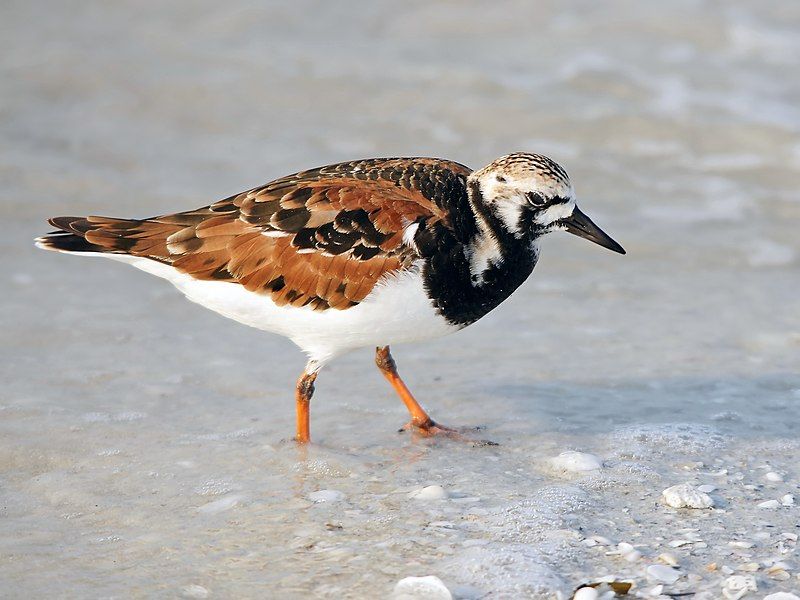
The ruddy turnstone is a small, migratory bird that is found around the world. It is a member of the sandpiper family Scolopacidae and is one of two species in the genus Arenaria. It is a wading bird, which means it spends much of its time searching for food in shallow water.
Historically, it was placed in the family Charadriidae, which consists of other wading birds such as plovers. However, it has since been reclassified into the sandpiper family.
The ruddy turnstone is mainly a coastal species and can be found in estuaries, mudflats, beaches, and rocky shores. It is identifiable by its reddish-brown upperparts and white underparts, as well as its black tail and bill.
It has a short neck, short legs, and long, pointed wings. This bird is mainly a scavenger, feeding on small invertebrates such as insects, crustaceans, and molluscs.
It also eats a variety of plant material, including berries. The ruddy turnstone is an important species in its ecosystem, as its feeding habits help to keep the water clean and free of debris. It is also an important food source for other predatory birds, such as hawks and owls.
The ruddy turnstone is a vulnerable species and its population is declining due to habitat destruction and other human activities.
| Kingdom | Animalia |
| Phylum | Chordata |
| Class | Aves |
| Order | Charadriiformes |
| Family | Scolopacidae |
| Genus | Arenaria |
| Species | A. interpres |
14. Long-billed Dowitcher
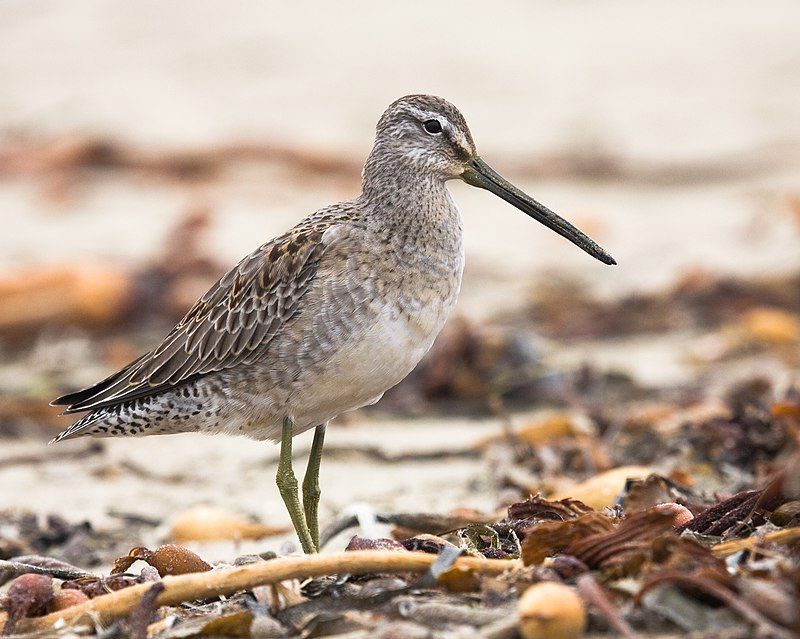
The long-billed dowitcher is a member of the sandpiper family, Scolopacidae, and is a medium-sized shorebird. It has a distinctive, long bill which is one of its defining features.
During the breeding season, adult long-billed dowitchers have vibrant rufous heads and underparts, while their backs are darker and mottled. The most striking feature of the bird in flight is its large white upper rump, which is not visible when the bird is at rest.
This white patch helps to distinguish the long-billed dowitcher from other shorebirds. The long-billed dowitcher is a common sight along the shorelines of North America, spending much of its time foraging on mudflats and shallow areas of water.
Its diet consists mainly of worms and aquatic invertebrates. It is an active and agile bird, often seen running in shallow water to catch its prey.
During migration, the long-billed dowitcher can be spotted in large flocks, as they travel along the coasts of North America to their wintering grounds in the south.
| Kingdom | Animalia |
| Phylum | Chordata |
| Class | Aves |
| Order | Charadriiformes |
| Family | Scolopacidae |
| Genus | Limnodromus |
| Species | L. scolopaceus |
15. Whimbrel
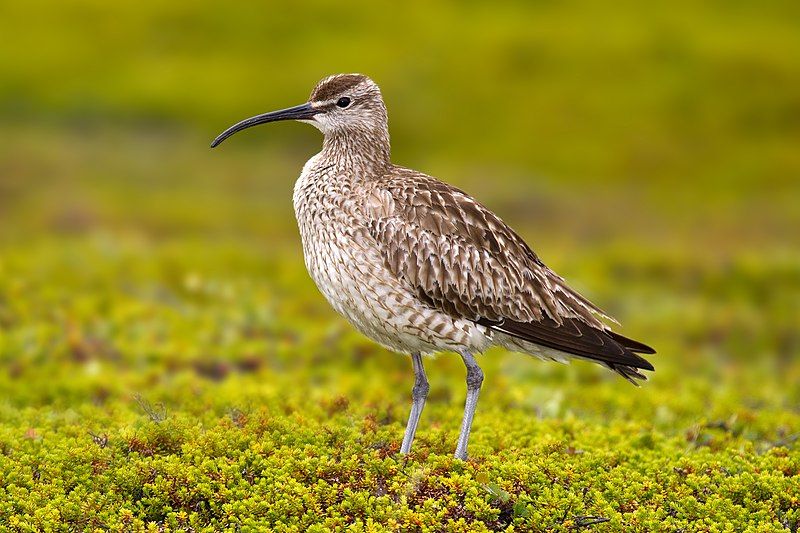
The Eurasian or common whimbrel is a shorebird that belongs to the Scolopacidae family. It is part of the large group of curlews, and it can be found in many parts of subarctic Asia and Europe. The species is also known as the white-rumped whimbrel in North America.
The Eurasian or common whimbrel breeds in these areas and can even be found as far south as Scotland. The Eurasian or common whimbrel has a distinct white rump and a long, down-curved bill that is used for probing in mud for food.
The species is usually seen in wetland habitats such as estuaries, mudflats, lagoons, and marshes. They feed mostly on small crabs, insects, and worms.
They also consume seeds and other plant material. The Eurasian or common whimbrel is a migratory bird, and its range covers a large area including parts of Russia, China, Scandinavia, and the United Kingdom.
During the breeding season, the birds gather in large numbers to build their nests on the ground and lay their eggs.
The chicks fledge after about four weeks and are ready to migrate shortly after. The Eurasian or common whimbrel is an important species for conservation as its population is declining due to a number of factors, such as habitat loss, over-harvesting, and changes in land use.
It is important to protect these birds and their habitats so that they can continue to be a part of our natural environment.
| Kingdom | Animalia |
| Phylum | Chordata |
| Class | Aves |
| Order | Charadriiformes |
| Family | Scolopacidae |
| Genus | Numenius |
| Species | N. phaeopus |
16. Short-billed Dowitcher
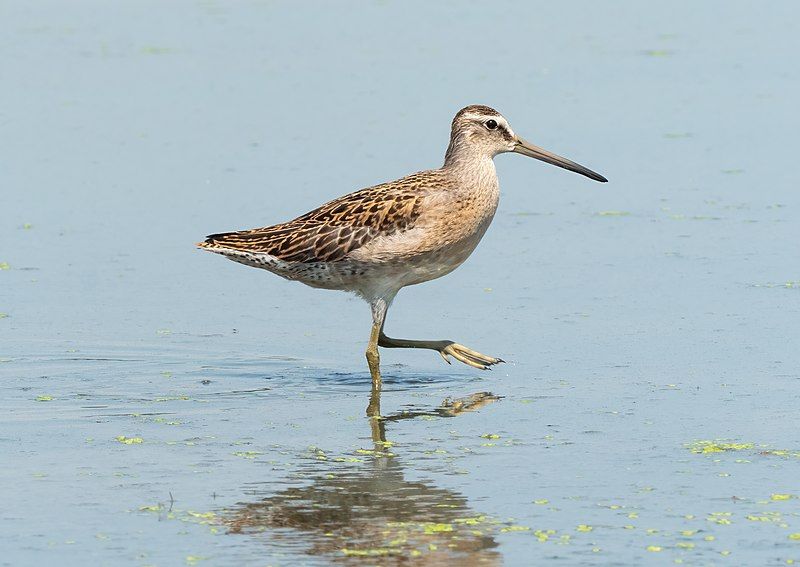
The short-billed dowitcher is a bird that is part of the Scolopacidae family, commonly known as shorebirds. It is a medium-sized bird, with a stocky frame and a long bill. It is found in various parts of North America, Central America, the Caribbean, and northern South America.
This species of shorebird is closely related to the long-billed dowitcher, which shares many of the same traits and habitats. The short-billed dowitcher is a fairly nondescript bird, usually with a mottled or streaked brown coloration in its plumage.
Its long bill is usually curved downwards and can be used to probe the mud and sand of its wetland habitats for food. The bird is generally seen in shallow water, such as estuaries, lagoons, or mudflats, and can be seen in large flocks.
It feeds mainly on small invertebrates, such as crustaceans, worms, and mollusks. The short-billed dowitcher is a fairly vocal species, with a loud, distinctive call that can often be heard in its wetland habitats.
Its breeding season tends to occur from late spring to early autumn, and its nests are usually built on the ground, near water.
The female will usually lay three to four eggs and will incubate them for around three weeks before the chicks hatch. Overall, the short-billed dowitcher is a common species of shorebird that can be seen throughout much of North and Central America, as well as parts of the Caribbean and northern South America.
It is an important species in its wetland habitats, and its presence is often an indicator of healthy ecosystems.
| Kingdom | Animalia |
| Phylum | Chordata |
| Class | Aves |
| Order | Charadriiformes |
| Family | Scolopacidae |
| Genus | Limnodromus |
| Species | L. griseus |
17. Rallidae
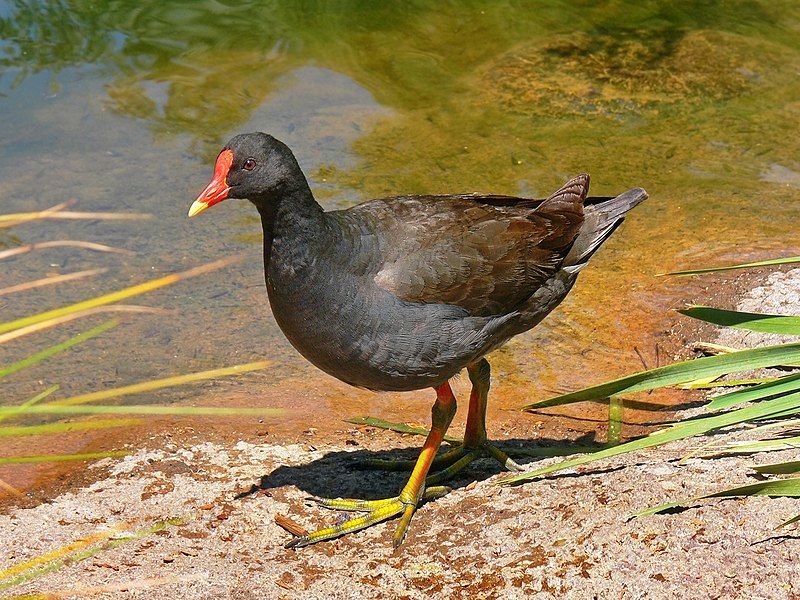
Rails are a type of bird that is small to medium-sized and can be found in a variety of habitats. They can be found on land or in semi-amphibious environments, making them incredibly adaptable.
This family of birds is quite diverse, with some species being quite common, like the crakes, coots, and gallinule, while others are very rare or endangered. This emphasizes the importance of protecting these species, as some are on the brink of extinction.
Rails are a unique type of bird, and their population should be monitored closely to ensure their continued survival.
| Kingdom | Animalia |
| Phylum | Chordata |
| Class | Aves |
| Order | Gruiformes |
| Family | Rallidae |
18. Eurasian Wigeon
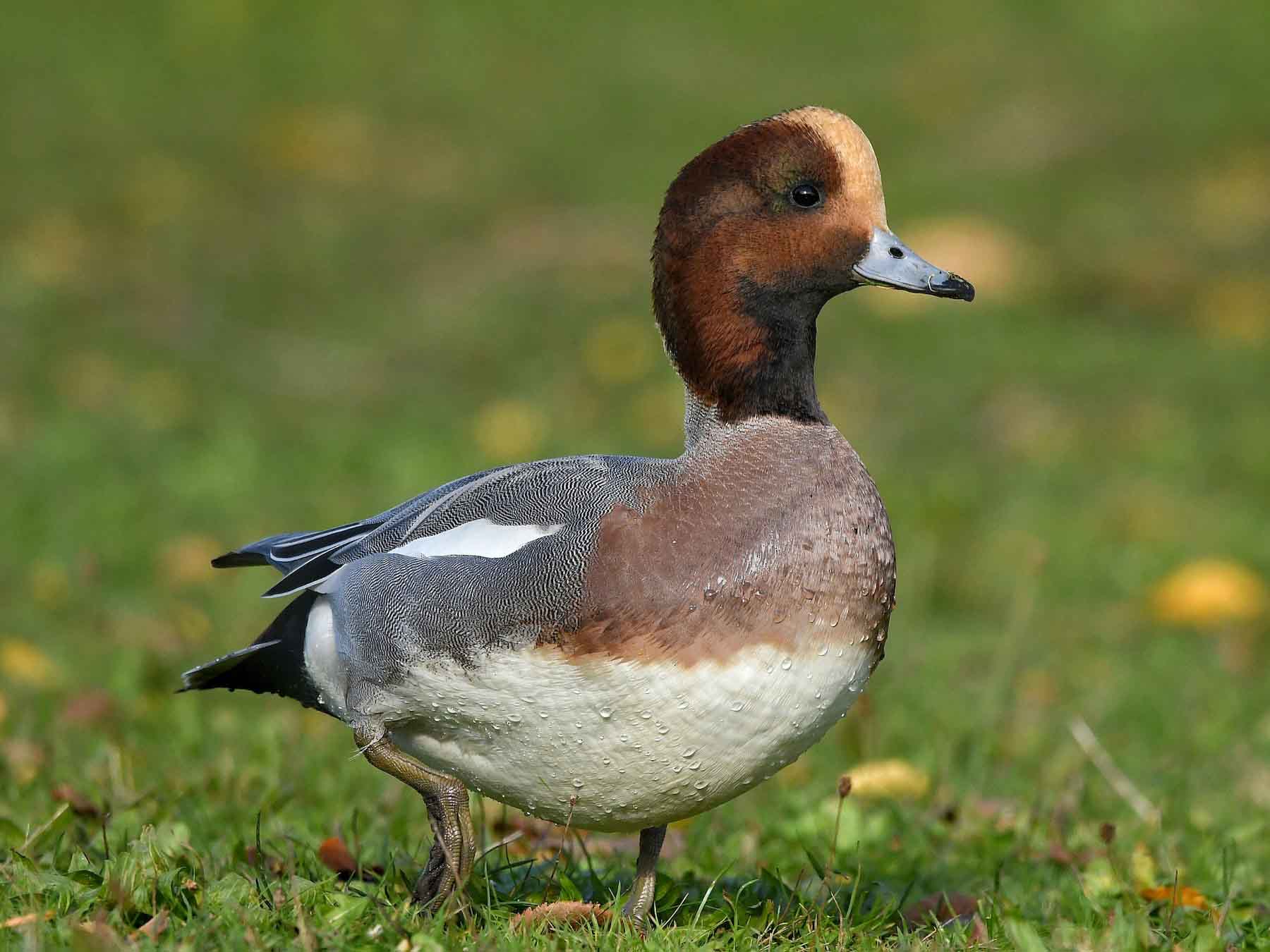
The Eurasian wigeon is a species of dabbling duck that can be found in the Palearctic region, which covers parts of Europe, eastern Asia, and northern Africa. It is also known as the European wigeon, widgeon, and simply wigeon.
The Eurasian wigeon is one of three species of wigeon that belongs to the genus Mareca. Due to its wide range, it is considered to be a widespread species. The Eurasian wigeon is a medium-sized duck, with males typically weighing around 500 to 800 grams.
They have a distinctive white cap and a light grayish-brown body. In flight, they display a white stripe along their wings. Unlike most ducks, the Eurasian wigeon has a relatively short bill and a small, round head.
The species is most commonly seen in shallow wetlands, where they feed on aquatic vegetation. The Eurasian wigeon is known to be quite social, often found in large flocks.
During the breeding season, they will form monogamous pairs and build nests in dense vegetation near the water’s edge. The female will typically lay between four to eight eggs, which will hatch after an incubation period of 24-27 days.
The chicks can fly after five weeks, but they may stay with their parents for up to nine weeks. The Eurasian wigeon is an important species in the Palearctic region, as it provides a vital source of food for many other species.
It is also hunted for sport and as a source of food. However, the species is classified as of Least Concern by the International Union for Conservation of Nature (IUCN), as its population is considered to be stable and not threatened by any significant threats.
| Kingdom | Animalia |
| Phylum | Chordata |
| Class | Aves |
| Order | Anseriformes |
| Family | Anatidae |
| Genus | Mareca |
| Species | M. penelope |
19. Masked Booby
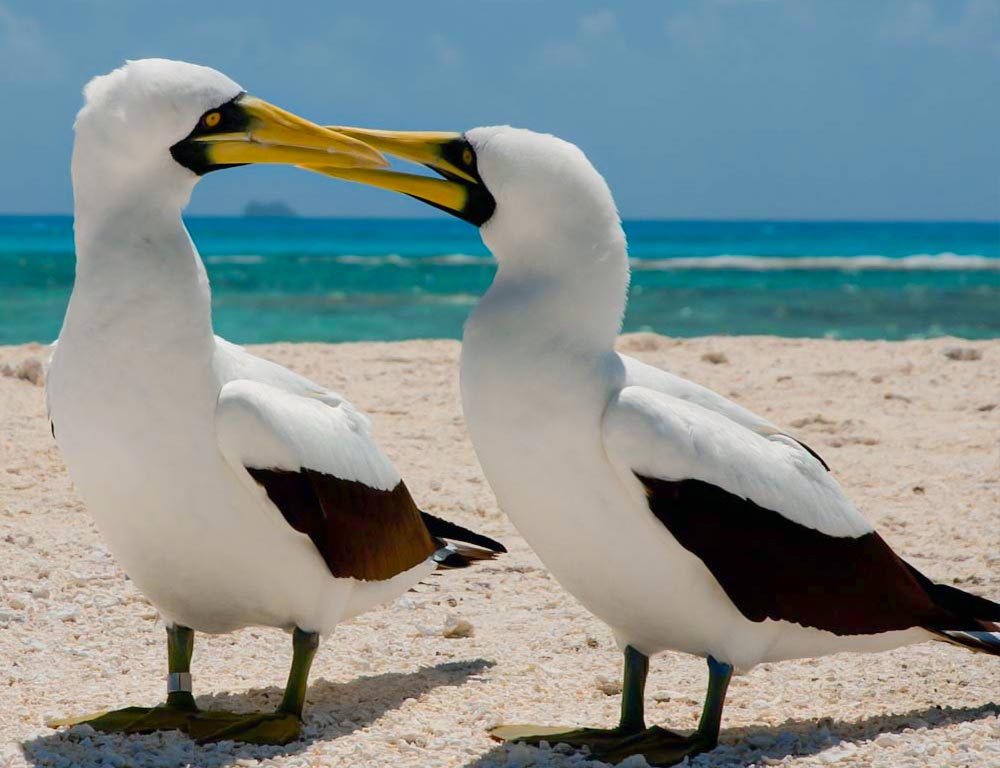
The masked booby is a large seabird that belongs to the booby and gannet family, Sulidae. It is also known as the masked gannet or blue-faced booby.
The species was first described by the French naturalist René-Primevère Lesson in 1831 and is one of six species of boobies in the genus Sula. The masked booby usually has a gray or white body and a distinct black mask across its eyes and forehead.
It has a long yellow bill and a strong, pointed tail. The wings and tail are usually black with white tips. Masked boobies can reach a wingspan of around 1.2 meters and weigh up to 2.3 kilograms.
They are typically found in tropical and subtropical oceans around the world, though they are most commonly spotted in the Caribbean and the Pacific Ocean. They typically feed on fish, squid, and crustaceans, which they catch by diving into the water from great heights.
Masked boobies often form large colonies on isolated islands, where they breed and nest.
| Kingdom | Animalia |
| Phylum | Chordata |
| Class | Aves |
| Order | Suliformes |
| Family | Sulidae |
| Genus | Sula |
| Species | S. dactylatra |
20. Bristle-thighed Curlew
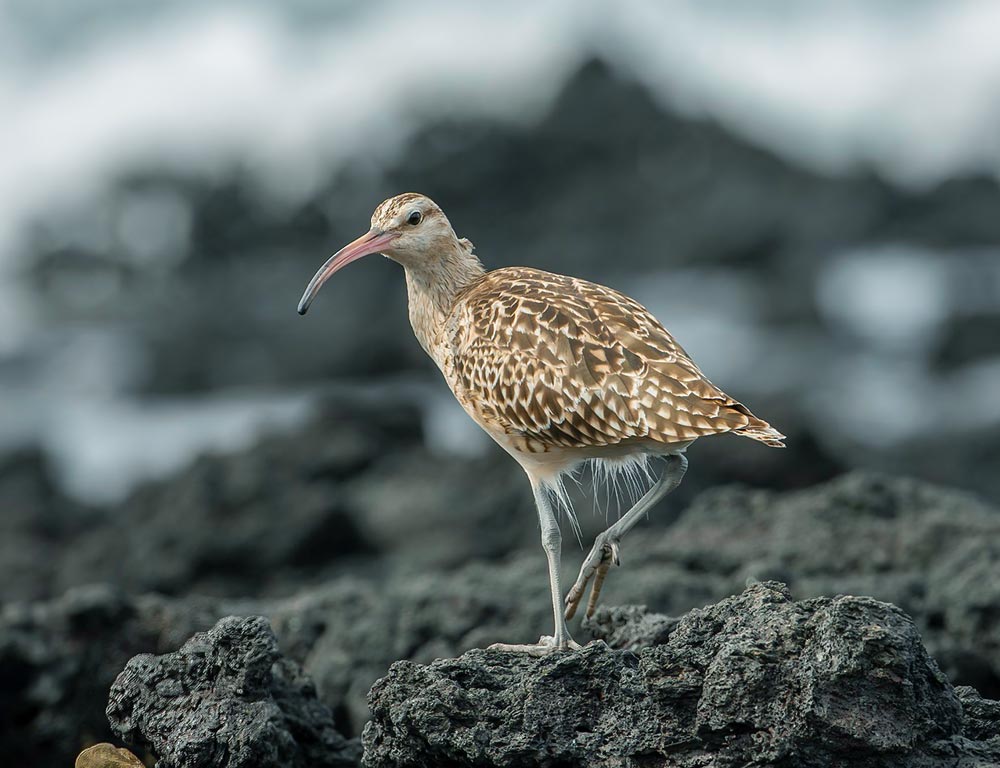
The bristle-thighed curlew is a species of shorebird that has a unique migration pattern. It is a medium-sized bird, slightly larger than a sandpiper, with a wingspan of approximately 50 cm.
The bristle-thighed curlew is most commonly found in Alaska during the summer months, breeding in the northernmost reaches of the state. It is believed that the bristle-thighed curlew uses the abundant food resources of the Arctic tundra to fuel its migration southward.
When the colder temperatures of winter approach, the birds head south to the warmer climates of the tropical Pacific islands. Here, they find plenty of food and more comfortable temperatures to spend the winter months.
The bristle-thighed curlew is very sensitive to environmental changes, and its population numbers have been declining in recent decades due to habitat destruction, overhunting, and pollution.
Conservation efforts are now focusing on protecting the birds’ breeding grounds and wintering grounds to ensure that the species can continue to thrive.
| Kingdom | Animalia |
| Phylum | Chordata |
| Class | Aves |
| Order | Charadriiformes |
| Family | Scolopacidae |
| Genus | Numenius |
| Species | N. tahitiensis |
21. Ruddy Turnstone
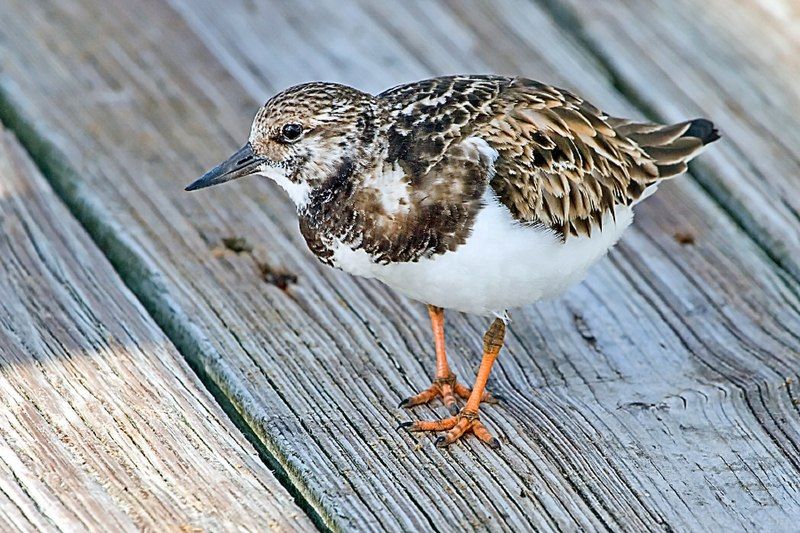
Turnstones are two bird species that make up the genus Arenaria, which is part of the family Scolopacidae. These birds are closely related to calidrid sandpipers, a type of bird that is most closely linked to the shore.
In fact, they might be considered to be part of the Calidriini tribe, which are shorebirds. These birds are migratory and can be seen in the winter along the coasts and beaches of North America, Europe, and Asia.
They have a unique habitat, as they feed by turning over stones and pebbles with their beaks, searching for food. This behavior gives them their name, as they are often seen turning stones to look for food.
They have a distinctive appearance, with their brown upperparts, white underparts, and bright orange legs and feet. They are quite small, measuring approximately 20 cm in length and weighing between 35 and 45g.
These birds are quite active, often flying in large flocks and even engaging in aerial acrobatics. They are also quite vocal, with a variety of calls and songs. All in all, turnstones are an interesting and unique species of bird that can be found around the world.
| Kingdom | Animalia |
| Phylum | Chordata |
| Class | Aves |
| Order | Charadriiformes |
| Family | Scolopacidae |
| Genus | Arenaria |
22. Pigeons and Doves
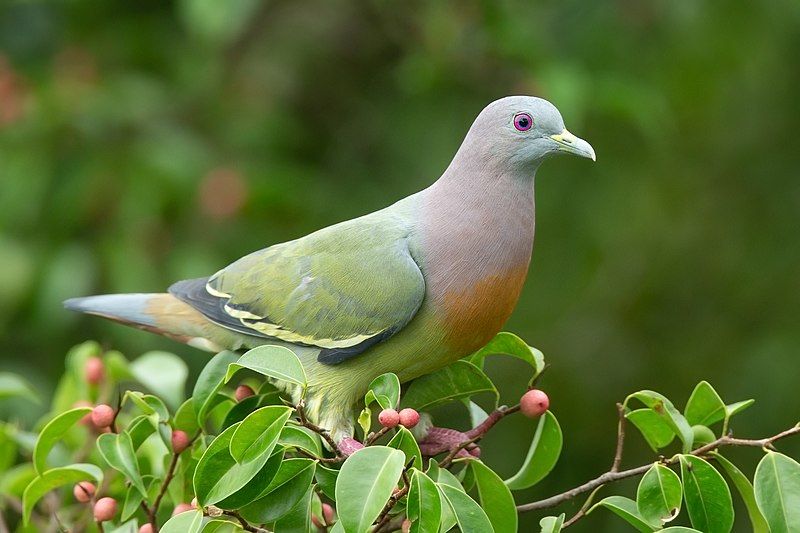
The Columbidae family is a group of birds made up of doves and pigeons. They are the only birds in the Columbiformes order, and they are easily distinguishable due to their stout bodies and short necks.
The bills of these birds are short and slender, although some species have a fleshy cere. These birds mainly feed on seeds, fruits, and plants, which can be found in their natural habitats. They are commonly found in woodlands, grasslands, and urban areas around the world.
Columbidae species are also known for their distinctive cooing call, which is often used as a form of communication between birds. They are also known for their strong pair-bonding behavior, which often results in lifelong monogamous relationships.
| Kingdom | Animalia |
| Phylum | Chordata |
| Class | Aves |
| Clade | Columbimorphae |
| Order | Columbiformes |
| Family | Columbidae |
23. Pacific Golden Plover
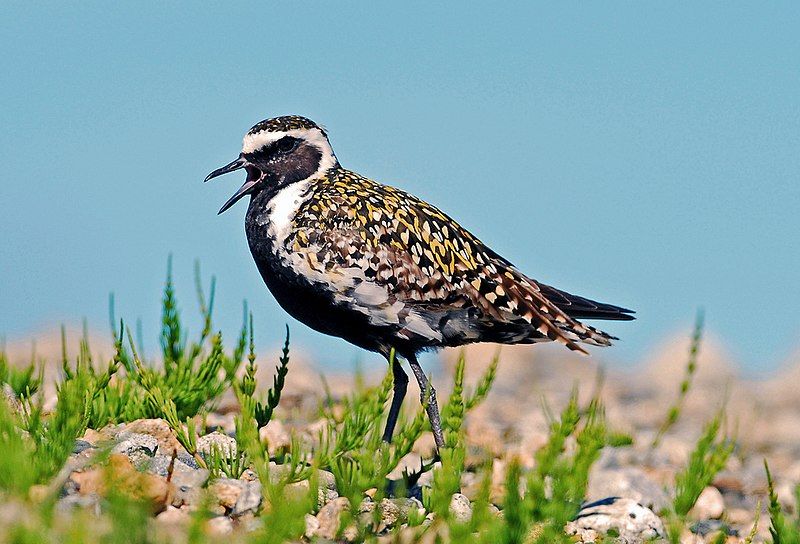
The Pacific golden plover is a migratory shorebird native to Alaska and Siberia. It is a medium-sized bird, mostly brown, and it has a distinctive black face and white stripe on the back of its neck.
During summer months, the plover breeds in its native locations of Alaska and Siberia. After the breeding season ends, the plover migrates widely across the Pacific to its non-breeding areas. It is known for its long-distance migrations, sometimes even flying over the open ocean.
The plover typically spends the winter months in Pacific coastal areas, such as Hawaii, Japan, and China. During the winter, they feed on insects, worms, and other invertebrates.
The Pacific golden plover is a remarkable creature, with its plucky spirit and ability to survive in tough conditions.
| Kingdom | Animalia |
| Phylum | Chordata |
| Class | Aves |
| Order | Charadriiformes |
| Family | Charadriidae |
| Genus | Pluvialis |
| Species | P. fulva |
24. Sooty Tern
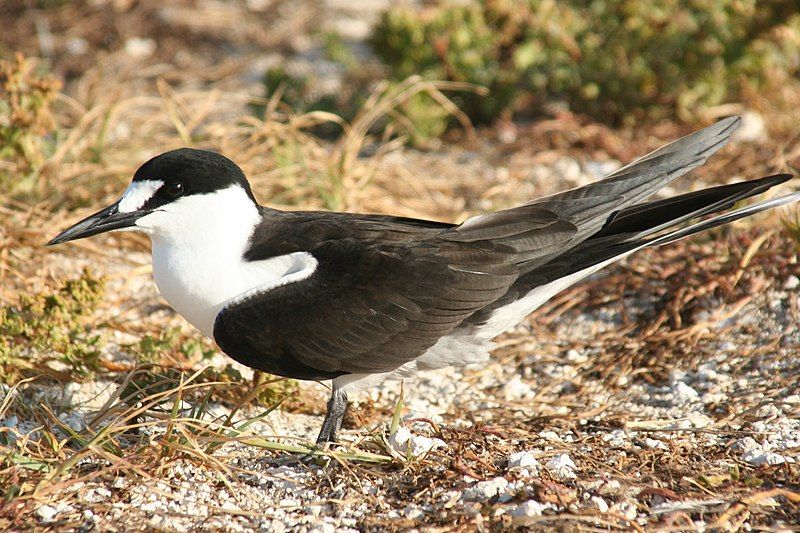
The sooty tern is a species of seabird from the family Laridae, which also includes gulls and skimmers. It is a bird that resides in the tropical oceans of the world, taking to the land only to breed on islands along the equatorial zone.
This zone is located around the middle of the planet, roughly between the Tropic of Cancer and the Tropic of Capricorn. The sooty tern is a small bird, usually measuring between 25 and 27 centimeters long, with a wingspan of up to 80 centimeters.
It has a distinctive black head and wings, with distinctive white plumage on the underside of its body. The sooty tern is a superb aerialist, able to take advantage of the thermals and wind currents of the tropical oceans to soar and glide for long distances.
It feeds primarily on fish, but also takes small crustaceans, mollusks, and squid. The sooty tern has an interesting breeding behavior. It typically nests in large colonies on islands throughout the equatorial zone.
They are often found nesting on beaches and use their black coloration to blend into the sand and avoid predators. The female lays a single egg, which is incubated by both parents for about a month.
The chicks are then raised and fledged in the colony until the parents and young birds disperse back to the ocean. The sooty tern is an amazing species, which has adapted perfectly to the environment of the tropical oceans.
It is a remarkable aerialist and has a fascinating breeding behavior that has enabled it to survive and thrive in the equatorial zone.
| Kingdom | Animalia |
| Phylum | Chordata |
| Class | Aves |
| Order | Charadriiformes |
| Family | Laridae |
| Genus | Onychoprion |
| Species | O. fuscatus |
Conclusion
Birds on Wake Island are a diverse and unique population, providing numerous ecological benefits for the island’s native wildlife and human residents alike.
From the endangered white tern to the abundant black noddy, birds of Wake Island are a critical part of the island’s natural environment and deserve our preservation for future generations to enjoy.
The conservation of these birds is essential for the continued health of the island’s ecosystem and for the benefit of both its human and avian populations.